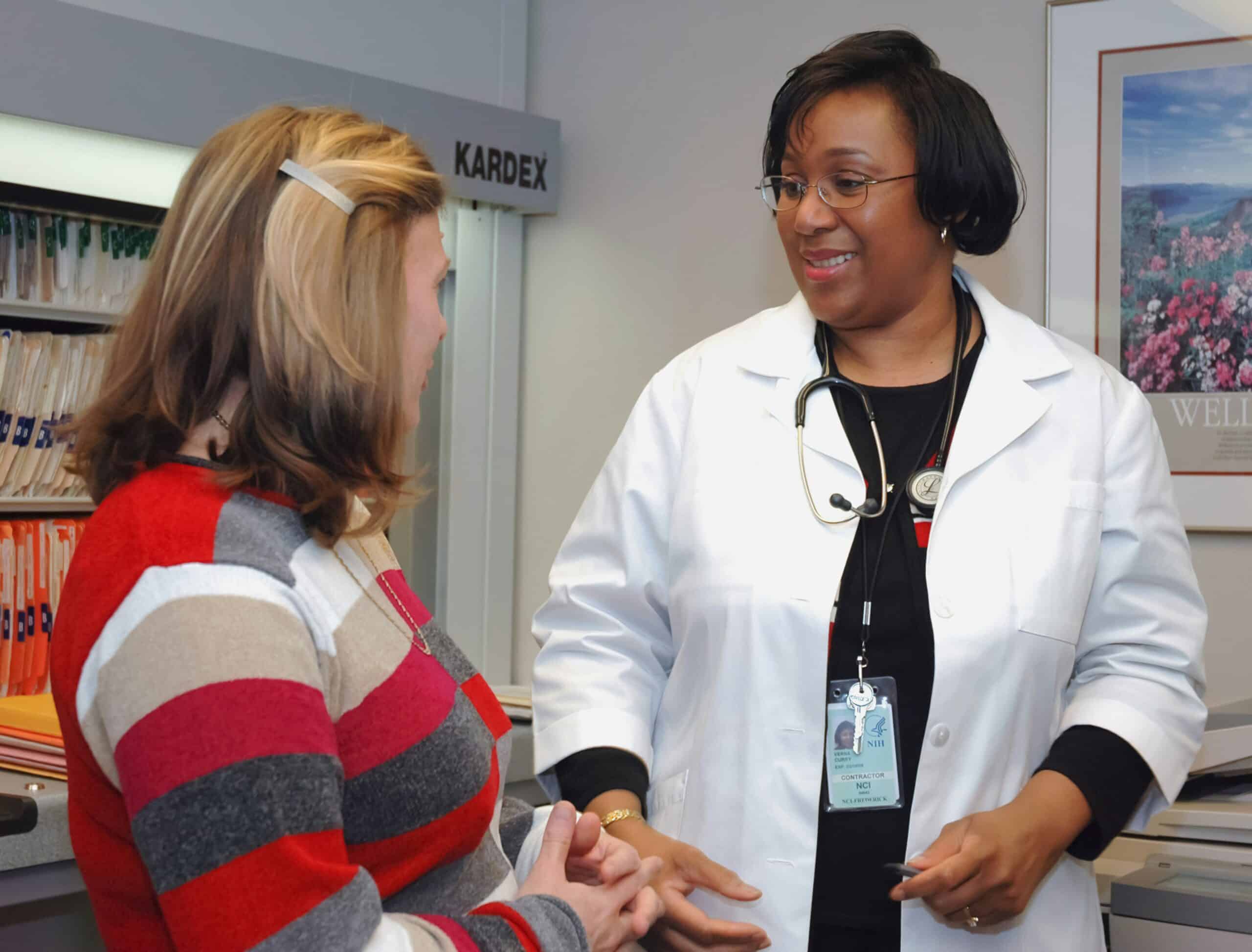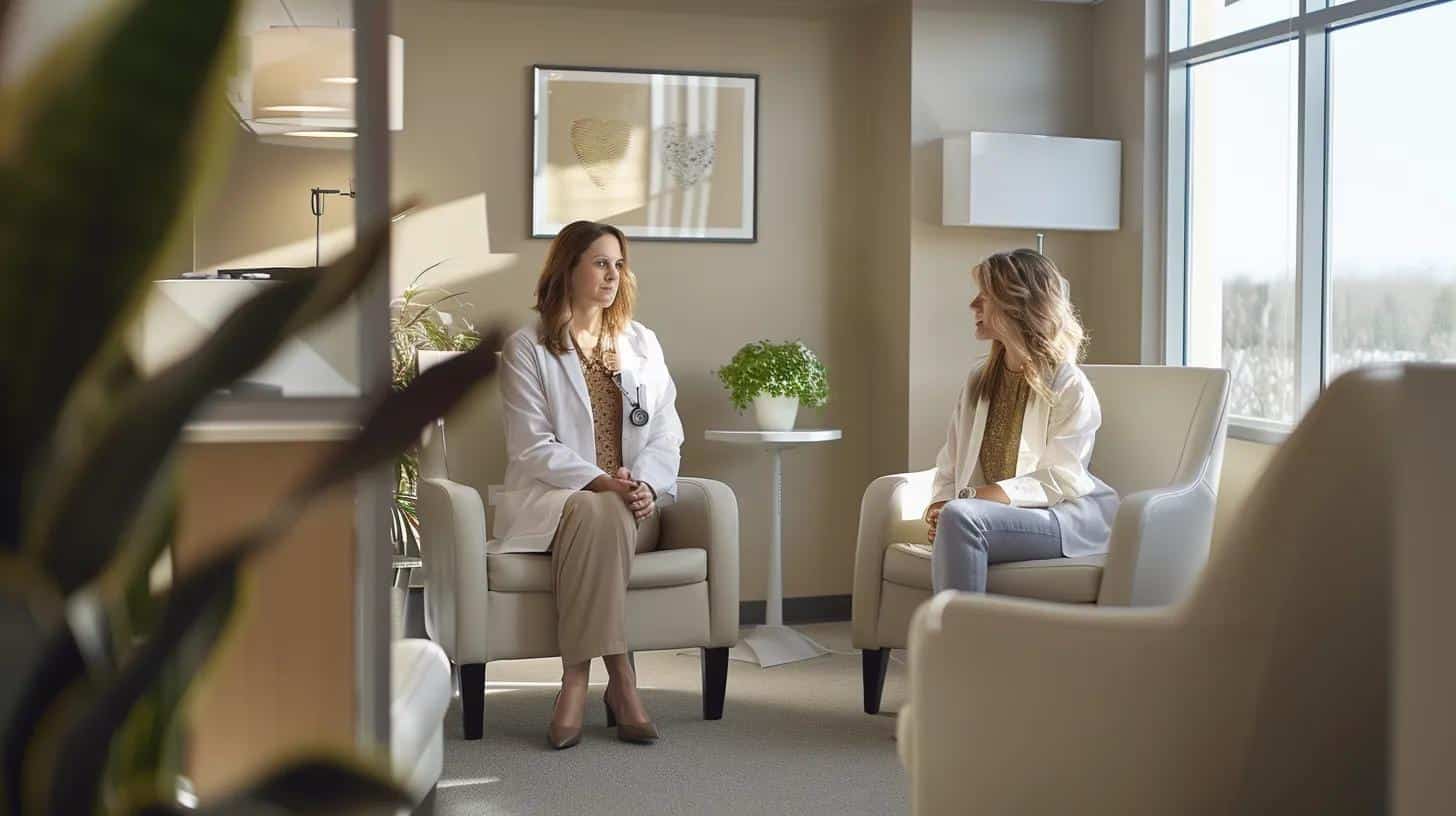Endometriosis is a chronic condition where tissue similar to the lining of the uterus grows outside the uterus. This misplaced tissue can lead to inflammation, scarring, and pain—especially during menstruation. Many women experience symptoms such as painful periods, pelvic discomfort, and difficulty with fertility, but the signs often go unrecognized or misdiagnosed for years. Understanding the common symptoms of endometriosis is crucial for early diagnosis, effective treatment, and preserving reproductive health. This guide highlights the most common indicators of endometriosis, explains how they are diagnosed, and outlines treatment options available for symptom relief and fertility support.
Key Takeaways
- Endometriosis happens when tissue like the uterine lining grows outside the uterus.
- Common signs include painful periods, pelvic pain, pain during sex, and digestive or bladder issues.
- Laparoscopy is the most accurate way to diagnose endometriosis.
- Hormone therapy, surgery, and lifestyle changes can help manage symptoms.
- Early diagnosis can protect fertility and reduce long-term complications.
- Support from specialists and peer groups can improve overall quality of life.
What Are the Most Common Symptoms of Endometriosis?

Women with endometriosis often experience a mix of symptoms. The most common are pelvic pain, painful menstruation, and pain during intercourse. Some women also report gastrointestinal or urinary issues.
How Does Pelvic Pain Signal Endometriosis?
Pelvic pain is the hallmark symptom. It is often intense, cramping, and persistent, frequently worsening during menstruation but sometimes occurring throughout the month. This pain results from inflammation and scarring due to misplaced endometrial tissue. Because the pain can radiate to the back and thighs and may be deep-seated, it can interfere with daily routines. Doctors use pelvic exams, ultrasound, or laparoscopy to identify the source, making early recognition critical to avoid long-term complications.
What Are the Signs of Painful Periods and Heavy Menstrual Bleeding?
Dysmenorrhea (painful periods) and menorrhagia (heavy menstrual bleeding) are important signs. Women often experience more severe pain and heavy blood loss, which can lead to anemia and fatigue. The inflammation linked with endometriosis can cause irregular shedding of the uterine lining. By monitoring menstrual cycles and blood loss, patients can help doctors identify signs of the condition and decide if further tests, like transvaginal ultrasound or MRI, are needed.
How Can Endometriosis Cause Pain During Sex?
Dyspareunia, or pain during intercourse, is common. This occurs when endometrial tissue grows on pelvic structures like ligaments, ovaries, or even the bowel, leading to inflammation and adhesions. Friction during intercourse may trigger sharp, cramping pain that can continue afterward, affecting intimacy. Treatment options, including hormonal therapy, laparoscopy, and pelvic floor physical therapy, can alleviate pain and improve quality of life.
What Bowel and Bladder Symptoms Indicate Endometriosis?
Endometriosis can affect organs outside the reproductive system, causing painful bowel movements, diarrhea, constipation, and abdominal cramps—especially during menstruation. Bladder symptoms such as frequent urination, urgency, or pain when urinating may also occur. These symptoms often serve as clues for physicians when conditions like irritable bowel syndrome (IBS) or urinary tract infections are ruled out, prompting a more focused investigation for endometriosis.
Can Endometriosis Cause Fatigue and Other Systemic Signs?
Many women experience chronic fatigue, low-grade fever, and mood changes like depression or anxiety. The sustained inflammation due to endometrial deposits can trigger a widespread response in the body, reducing energy levels and affecting emotional well-being. Managing these systemic signs often requires a holistic approach that includes diet, exercise, and sometimes complementary therapies.
How Is Endometriosis Diagnosed? Key Tests and Procedures to Know

Diagnosing endometriosis is essential for effective treatment. However, its symptoms are often similar to other conditions, so doctors rely on a combination of clinical history, physical exams, imaging, and sometimes surgery.
What Role Does Medical History and Physical Exam Play?
A thorough medical history and physical exam are the first steps. Physicians ask about menstrual patterns, pain intensity, and any related gastrointestinal or urinary issues. During a pelvic exam, abnormalities like tenderness or nodules may be felt. This initial evaluation helps doctors identify potential endometriosis and decide if further diagnostic tests are needed.
How Are Imaging Tests Like Ultrasound and MRI Used?
Transvaginal ultrasound is commonly used first; it can detect ovarian cysts (endometriomas) and larger lesions. MRI offers a detailed view and can spot deep-infiltrating endometriosis that might be missed on ultrasound. Combining these non-invasive techniques helps outline the extent of the condition and guides treatment decisions.
Why Is Laparoscopy the Gold Standard for Diagnosis?
Laparoscopy remains the most definitive diagnostic tool. This minimally invasive surgery allows doctors to look directly at the pelvic organs and take tissue samples for analysis. Although it requires anesthesia, laparoscopy provides a clear picture of lesion size, location, and extent, and it can be used to remove problematic tissue during the same procedure.
What Are the Challenges in Diagnosing Endometriosis Early?
The symptoms of endometriosis vary and can mimic other conditions, often delaying diagnosis. Many women suffer for years before receiving a definitive diagnosis because early signs like mild pelvic discomfort or fatigue may be attributed to more common issues. Additionally, small lesions might not be visible on imaging tests, and some patients may be hesitant to undergo invasive tests like laparoscopy. This diagnostic gap underscores the need for increased awareness and earlier evaluation.
What Treatment Options Are Available for Endometriosis Symptoms?

Treatment for endometriosis is tailored to the individual, considering the severity of symptoms and reproductive goals. Options include hormone therapy, surgery, pain management, and lifestyle modifications.
How Does Hormone Therapy Help Manage Symptoms?
Hormone therapy works by regulating estrogen levels, which are key in the growth of endometrial tissue. Medications like birth control pills, GnRH agonists, and progestin help reduce menstrual flow and slow disease progression, easing pain and other symptoms. While hormone therapy does not cure endometriosis, it can provide significant symptom relief and is often combined with other treatments.
When Is Surgery Recommended and What Does It Involve?
Surgery is considered when symptoms are moderate to severe or when other treatments have not been effective. Laparoscopic surgery is typically used—it removes or ablates endometriotic lesions and adhesions, which can relieve pain and potentially improve fertility. In severe cases, more radical surgeries, including hysterectomy, may be recommended, especially if future fertility is not a concern.
What Pain Management Strategies Are Effective?
Pain management usually involves a mix of over-the-counter pain relievers (like NSAIDs) and, in more intense cases, prescription medications. Other approaches include acupuncture, physical therapy, and cognitive behavioral therapy. Adjustments in lifestyle—such as regular exercise and dietary changes—can further help reduce pain and improve overall quality of life by decreasing inflammation.
How Can Lifestyle Changes Support Treatment?
Lifestyle modifications play a key role in managing endometriosis. An anti-inflammatory diet rich in fruits, vegetables, whole grains, and omega-3 fatty acids, along with regular exercise, can reduce systemic inflammation and promote better blood circulation. Practices such as yoga, meditation, and maintaining good sleep hygiene also help manage both pain and stress associated with the condition.
How Does Endometriosis Affect Fertility and Reproductive Health?
Endometriosis can interfere with fertility in several ways. The abnormal tissue growth can distort pelvic structures, lead to adhesions, and create an inflammatory environment that interferes with ovulation and embryo implantation.
What Is the Link Between Endometriosis and Infertility?
The presence of endometrial tissue outside the uterus often causes scarring and adhesions, which can block fallopian tubes or disturb ovarian function. Inflammatory factors may also affect egg quality and sperm function, complicating conception. Many women with moderate to severe endometriosis face difficulties in conceiving, which is why treatments such as in vitro fertilization (IVF) are frequently considered.
How Can Early Symptom Recognition Improve Fertility Outcomes?
Recognizing endometriosis symptoms early allows for timely treatment, which can prevent further scarring and preserve reproductive function. Early interventions, whether surgical or medical, help maintain a healthier pelvic environment, thereby offering improved fertility outcomes compared to untreated advanced stages.
What Fertility Treatments Are Available for Women With Endometriosis?
For women facing infertility due to endometriosis, several options exist. Standard ovulation induction and assisted reproductive technologies like IVF are commonly used. Laparoscopic surgery to remove lesions may also restore normal pelvic anatomy, enhancing natural conception chances. Often, a combination of treatments is tailored to each woman’s unique situation, balancing fertility goals with symptom management.
When Should You See a Doctor About Endometriosis Symptoms?

Timely consultation with a healthcare provider is crucial if endometriosis symptoms are present. Early treatment can prevent symptom worsening and protect fertility.
What Early Signs Should Prompt Medical Consultation?
Persistent pelvic pain, heavy menstrual bleeding, painful periods, and discomfort during intercourse are key warning signs. Additionally, recurring gastrointestinal symptoms during menstruation or abnormal urinary patterns warrant a professional assessment. If these signs continue for several menstrual cycles, it is important to seek further evaluation.
How Can You Prepare for Your Medical Appointment?
Keeping a detailed journal of symptoms—including their frequency, duration, and severity—can help during the consultation. Bringing prior medical records such as ultrasound or MRI reports and a list of current medications will provide valuable context. Preparing specific questions about diagnostic tests (like laparoscopy) and treatment options can make the appointment more productive.
What Questions Should You Ask Your Gynecologist?
Consider asking: – What tests do you recommend for confirming endometriosis? – What treatment options are available and how might they affect my fertility? – Are there lifestyle changes that could complement my treatment? – What are the risks and benefits of surgical versus non-surgical options?
How Can You Differentiate Endometriosis Symptoms From Similar Conditions?
Because symptoms of endometriosis often overlap with other conditions, it is important to distinguish it from disorders like adenomyosis and pelvic inflammatory disease (PID).
What Are the Differences Between Endometriosis and Adenomyosis?
Both conditions involve endometrial tissue, but in endometriosis it is located outside the uterus, whereas adenomyosis occurs within the uterine wall. Adenomyosis typically causes uniformly heavy and painful periods with an enlarged uterus, while endometriosis usually results in variable pelvic pain and additional symptoms such as pain during intercourse.
How to Distinguish Endometriosis From Pelvic Inflammatory Disease (PID)?
PID is an infection that usually presents with fever and acute pelvic pain along with signs of infection. In contrast, endometriosis is a chronic inflammation that develops gradually, with symptoms often linked to the menstrual cycle rather than an acute illness. Laboratory tests and imaging studies help in differentiating the two.
When Are Bowel and Bladder Issues Due to Endometriosis or IBS?
Bowel and bladder complaints in endometriosis often follow a cyclical pattern, worsening during menstruation, whereas irritable bowel syndrome (IBS) tends to have a chronic, less predictable pattern. Tracking symptoms in relation to menstrual cycles can help doctors determine the cause.
What Support and Resources Are Available for Living With Endometriosis?

Living with endometriosis can be challenging, but various resources are available to help manage the condition and improve quality of life. Support ranges from specialized medical care to patient support groups and educational resources.
How Can Patient Stories Help You Understand Endometriosis?
Hearing personal stories from others with endometriosis can validate your experiences, reduce feelings of isolation, and offer practical advice on managing pain and treatment options. These narratives reinforce the importance of early diagnosis and a holistic, individualized approach to treatment.
What Lifestyle Tips Can Improve Quality of Life?
Dietary changes, regular low-impact exercise, stress management through mindfulness or meditation, and maintaining a healthy sleep schedule can all contribute to reducing inflammation and improving overall well-being. Consulting with healthcare professionals can help tailor these lifestyle modifications to your specific needs.
Where Can You Find Support Groups and Medical Specialists?
Support groups, both online and in-person, provide safe spaces for discussion and sharing of experiences. Organizations like the Endometriosis Foundation offer educational materials and community resources. Additionally, seeking care from specialists in endometriosis can ensure access to the most current diagnostic and treatment options.
Comparison of Diagnostic and Treatment Procedures for Endometriosis
Before delving into final steps of care, review this comparison of procedures:
Non-invasive methods like ultrasound and MRI are useful for early assessment, but laparoscopy remains the most accurate method for diagnosis and treatment.
Frequently Asked Questions
How long does it usually take to diagnose endometriosis?
On average, it takes 6 to 10 years from the start of symptoms to receive a diagnosis. This delay is often due to the condition being mistaken for other issues.
Are over-the-counter pain relievers enough for endometriosis pain?
Mild cases may be managed with NSAIDs like ibuprofen, but many women require prescription medications or hormonal treatments for more effective relief.
Can hormone therapy cure endometriosis?
Hormone therapy does not cure endometriosis but helps control symptoms by slowing the growth of endometrial tissue. It is often used as a long-term management tool.
What are the common side effects of hormonal treatments?
Side effects can include mood swings, weight gain, irregular bleeding, and menopausal-like symptoms. These should be discussed with a doctor to choose the best treatment plan.
Is surgery a permanent fix for endometriosis?
Surgery can significantly reduce pain and improve fertility, but symptoms may return over time. Ongoing care is usually needed after surgery.
Do lifestyle changes really help with symptom management?
Yes, an anti-inflammatory diet, regular exercise, and stress-reduction techniques like meditation or yoga can support medical treatments and improve daily comfort.
Why is mental health support important for endometriosis patients?
Chronic pain, fertility challenges, and hormonal shifts can impact mental well-being. Therapy and emotional support can help patients cope and stay resilient during treatment.
Conclusion
Endometriosis affects millions of women and often goes undiagnosed for years. Recognizing symptoms like pelvic pain, heavy periods, and fatigue can lead to earlier intervention and better outcomes. Diagnosis typically involves a combination of clinical exams, imaging, and in some cases, laparoscopic surgery. With a range of treatment options—including hormone therapy, pain management, and surgical procedures—many women find relief and regain control over their health. Lifestyle changes and mental health support also play an important role in managing the condition. The sooner you seek help, the more effectively endometriosis can be managed to preserve both comfort and fertility.

